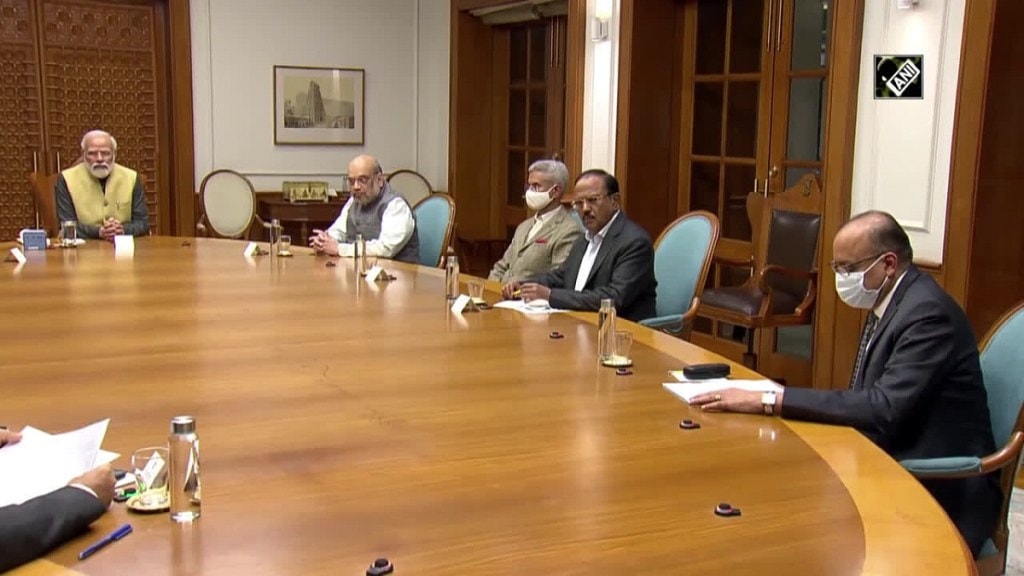India and the US inked a deal for 31 Predator drones when Prime Minister Narendra Modi was in the United States for a state visit at the invitation of President Joe Biden.
The Predator drones fall under the category of HALE (high-altitude and long-endurance) drones with variants for the armed forces with different objectives and operational capabilities.
The majority of the drones –15 SeaGuardian drones — will go to the Indian navy, while the rest of the drones of land versions—8 SkyGuardian drones—will go to the Indian army and Indian air force.
The major objective of having such drones is primarily for intelligence and surveillance operation.
As the Indian Navy Chief Admiral R Hari Kumar explained the objective: “So, we realised there is a need for having these drones for better surveillance and increased maritime domain awareness.”
Drones are already shaping warfare and militaries around the world are focusing on developing military-grade autonomous capabilities—either by manufacturing or acquiring through global manufacturers. In many cases, such advanced platforms are highly restricted and limited to close-knit allies and partners in the world of highly polarized geopolitics.
The acquisition process for drones
The one major step towards drone acquisition is the “acceptance of necessity” which is accorded by the Defence Acquisition Council (DAC).
So, as per the latest development, the Government of India (GOI), accorded the AoN to the proposed acquisition of 31 by its principal authority –DAC. which happened on June 15.
While this is a significant step towards achieving the drones, the pricing only remains a yardstick at this stage which will be negotiated on each component and sub-systems and weapons if that is added to the platforms.
Importantly, it must be noted that the proposed deal is between the government to the government (G-to-G) which bypasses the several archaic and long acquisition processes which might take many years. While such a process is necessary in most cases, there are underlined mechanisms in the Ministry of Defence (MoD)’s well-structured Defence Acquisition Procedures (DAP) -2020 which is for the G-to-G arrangement only for the highly advanced and critical military platforms for the Indian armed forces.
So, the next step under such an arrangement will be the final approval by the Cabinet Committee on Security (CCS) which is responsible for conducting discussions and debates on issues of national security. It is also responsible for discussing the issues concerning international deals that impact India’s security.
The CCS is chaired by the Prime Minister of India with the members which include the Minister of Defence, Minister of Home Affairs, Minister of Finance & Corporate Affairs and Minister of External Affairs.
Last year, in a major decision, the Cabinet Committee on Security sanctioned 6,500 crore rupees for designing and developing Tejas Mark-2 fighter jet with prototypes, flight testing, and certification.
Price wars over drones
The indicative cost of the drones which is offered by the US government is $3,072 million. As mentioned, the price is to be negotiated from here component by component, maintenance over its life-cycle alongside the elements of indigenization.
Here in this case, the GA has also committed to setting up a Maintenance, Repair and Overhaul (MRO) facility in India that will support all issues related to the predators’ serviceability and in some cases upgrades at a later stage.
However, in the initial stage, the pricing works out to be $99 million for each drone.
According to an MoD official, key systems and sub-systems like censors, weapons and payloads make up 60-70 per cent of the total cost.
The other key element is often forgotten –research and development cost—that an Original Equipment Manufacturer (OEM) spends over the years to develop such cutting-edge technologies.
Through such deals, an emerging nation like India wishes to have those crucial elements of advanced military technologies and its manufacturing or assembly within India as part of the deal.
The recent India-U.S. jet-engine deal with General Electric builds upon the core of indigenization that GE will transfer technologies which might range from 70 to 80 % of the overall engine technologies which is a highly complex process.
However, in the case of Predators drones, the element of indigenization is below 10 % and the effort will be to embrace a greater element under ‘make in India’.
As per the proposed deal, India is looking to buy 11 of these drones off-the-shelf and the rest will be assembled in the country.
According to the MoD official, India is looking at realising 15-20 per cent technological know-how as part of the Transfer of Technologies (ToTs), including engines, radar processor units, avionics, sensors and software. How much will be sourced from India could be outlined in the next stage.

